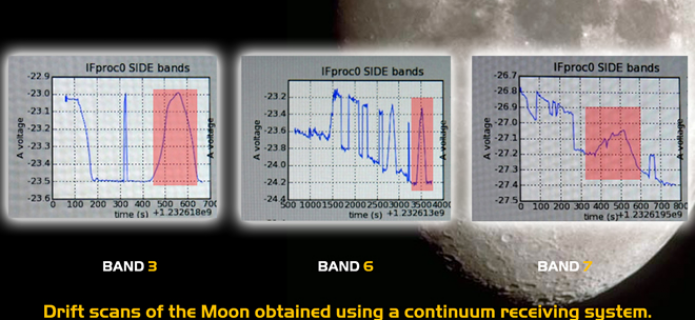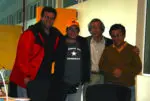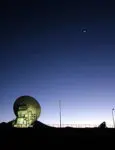First astronomical detection test with ALMA antenna
22 January, 2009 / Read time: 3 minutes
On January 22nd, the first radiometric observations were made using an antenna delivered by East Asia and a receiving system delivered by North America and Europe. Although the full suite of electronics which will eventually make ALMA the most sensitive mm/submm array on the planet are still in the process of being delivered and installed, the successful detection of the Moon at three frequencies demonstrates the functionality of the integrated system thus far, and is a significant achievement for the project.
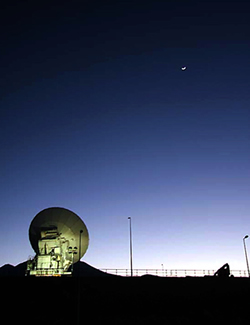
The antenna was first pointed at blank sky as hardware and software tests were done to be sure that the signal arriving at the antenna was being successfully passed through the system to the detectors. Then the antenna was pointed at the Moon, which is a very bright source over a large range of frequencies, and also easy to find in the sky, and thus presents an obvious target for the first detection of light using the integrated system.
The signals were recorded using "drift scans," a technique which involves pointing the antenna toward a point in the path of the Moon and remaining stationary as the Moon passes through the field of view. This allows the team members to see the large increase in signal as the Moon enters the beam, and to observe the signal for a longer period than simply moving across the source using the antenna motors. The Moon was detected at receiver bands 3, 6, and 7, which receive light at around 100, 250 and 300 GHz, respectively. There was no detection at band 9 (650 GHz), but this was not entirely surprising as atmospheric absorption is more significant at this frequency.
“Although this achievement is only a small step toward the full verification in the future, it is an important milestone to demonstrate that the antenna-receiver system is actually working as a single-dish radio telescope,” said Masato Ishiguro, AIV (Assembly, Integration and Verification) scientist.
There was a great deal of excitement and relief amongst the entire team working on the project when these preliminary detections were made, and the work continues to bring the rest of the equipment online with a view to being able to combine the signals from two antennas within the next several months using a supercomputer called a correlator.
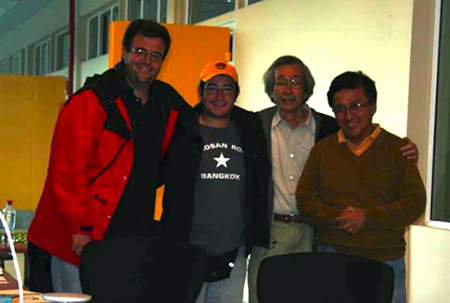
Stuartt Corder (CSV), Juan Pablo García (AIV), Masato Ishiguro (AIV), Roberto Avilés (SciOps) and Antonio Hales (CSV, not pictured).
This detection was a joint effort between the AIV (Assembly, Integration and Verification), CSV (Commissioning and Science Verification), DTS (Department of Technical Services) and SciOps (Science Operations) working groups with the three ALMA Executives (ESO, NAOJ, NRAO).

